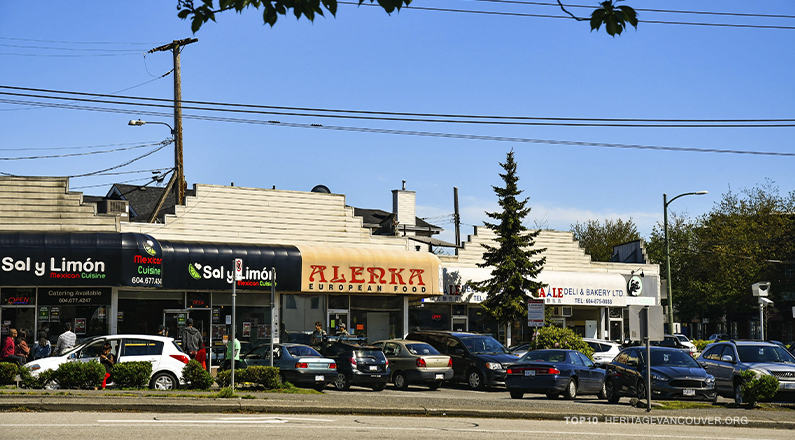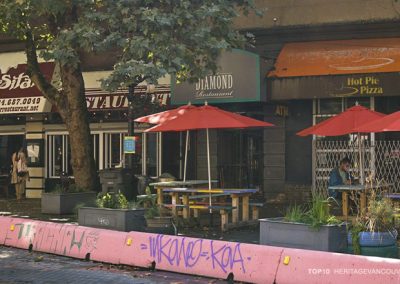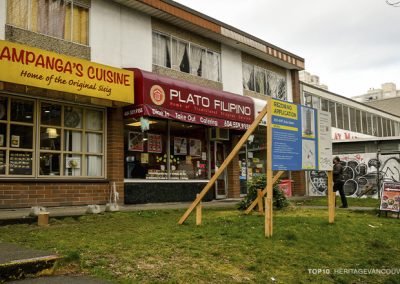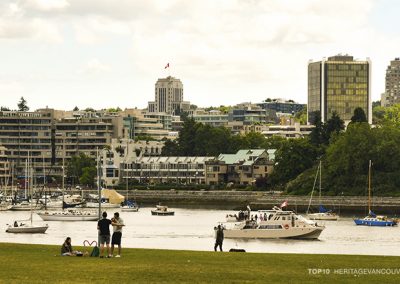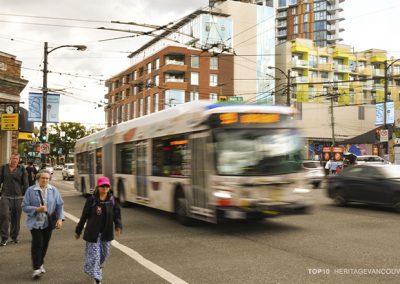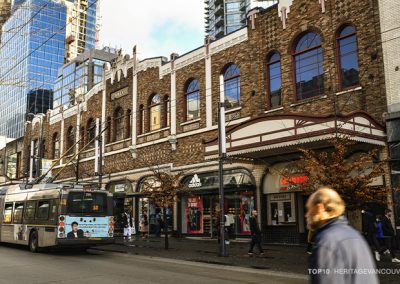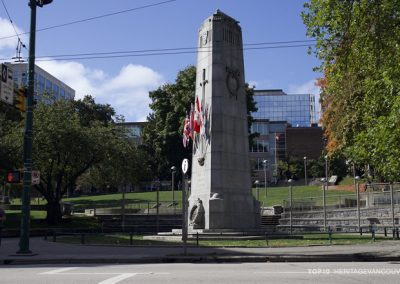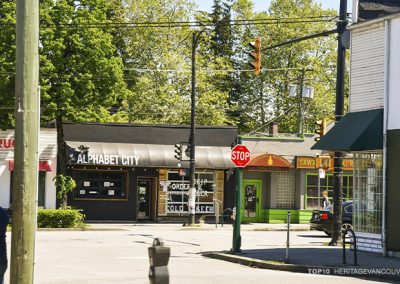East Vancouver has gained a reputation for being hip, vibrant, and bohemian. It’s also known for being one of Vancouver’s more livable neighbourhoods. At the centre of the neighbourhood lies Kingsway, a 13.7 kilometre-long street running diagonally from Main St. to Boundary St., effectively bisecting the area.
As Kingsway hosts some of the city’s large low-rise sites, there is interest in redeveloping those plots into mixed-used housing. One of the consequences is the potential loss of the existing businesses along the street. This has already happened in several important areas, such as the corner of Kingsway and Nanaimo St., where a large multi-story condo building was built in 2011. Change in zoning rules that shifted zoning away from being primarily commercial (C-2) to being a form of mixed-use residential (CD-1) has contributed to this.
About
Unlike most of the city’s streets, Kingsway runs at an angle through the heart of some of the city’s most diverse neighbourhoods. There are few other places in Vancouver that have large, uninterrupted stretches of more affordable commercially-zoned areas that are tied to its intersecting neighbourhoods.
Beginning in the heart of Mount Pleasant, where it hosts beloved restaurants and a hospital, Kingsway continues into Kensington-Cedar Cottage and Renfrew Collingwood, where the streetscape is dotted by strip malls, car repair shops and mom and pop shops. Various cultural communities are connected to the street. Throughout these neighbourhoods, Kingsway has many Vietnamese, Chinese, and South Asian businesses. There is an unique mix of pho restaurants, decades-old transmission and body shops, and grocers with fresh vegetables under awnings in open air settings as well as housing on upper levels. The businesses reflect the demographic makeup of these neighbourhoods and serve the communities in which they are situated.
Why on Top10?
Intensification of development on Kingsway can mean displacement of current renters and existing commercial businesses important in supporting the neighbourhood. It also affects affordability in areas that have residents with lower incomes. As the character of the street changes, there can be significant effects on the communities attached to the street.
Little Saigon, which is centred around the intersection of Kingsway and Victoria, is just one of these communities. Queen’s Plaza is a typical strip mall in the area: small, filled with locally-important businesses, and facing potential redevelopment. The Tyee, pointed out a paradox arising where zoning regulations designed to increase housing density “can make neighbourhoods less affordable” as neighbourhoods inadvertently shift to accommodate new development and rents rise as property values increase. This then forces out businesses and tenants that cannot meet the new demands for remaining in the neighbourhood.
While there are measures to protect renters to a degree, such as relocation programs, this type of support does not exist for businesses. And even if it did, it is difficult to be able to offset the effects at a scale that is necessary. This is because policies do not give serious consideration for why these commercial strips, with some of the most affordable leases that are home to very small scale businesses and immigrant communities, are important in the first place. Policy views C-2 more or less simply as land which is one of the issues that has arisen with the proposed development at 5163-5187 Joyce Street.
Further Reading
https://thetyee.ca/Analysis/2020/01/29/Little-Saigon-Ruin-Rentals-Housing-Gentrification/
Photo by Ben Geisberg
We acknowledge the financial assistance of the Province of British Columbia
